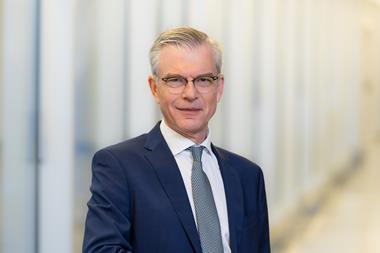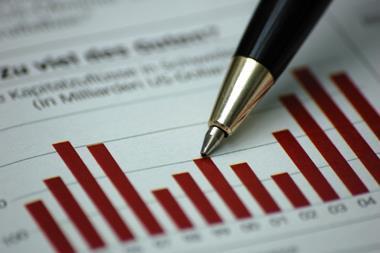Until now, Sweden's AP7 has not had the benefit of a level playing field. That is about to change, finds George Coats
If all goes as expected, the middle of next year will witness the emergence of a new AP7, the seventh Swedish national pension fund established in 2000 as the default fund for Sweden's then newly established premium pension (PPM) system.
But while the PPM was intended to give an element of choice as part of a reform of Sweden's state pension system, there was a distinct lack of choice when it came to AP7.
The PPM gave people the right to invest a small percentage of the 18.5% of their salary paid as contributions to the state pension system in up to five private funds. Those who did not make a choice were enrolled into AP7. But the fund was hemmed in by restrictions, while the PPM rapidly attracted some 800 funds. AP7's executive president since its inception, Peter Norman, (pictured right) set outperforming them as his fund's target. And he succeeded.
"We formulated a benchmark by calculating a capital weighted average of the offered funds on a daily basis," says Norman. "And over these eight years we have beaten this benchmark by roughly 9 percentage points, so that is slightly more than 1% a year, with a substantially lower risk. And we are very much cheaper. We charge 0.15% compared with an average of roughly 0.45% by our competitors. So we think we have done quite a good job but our success is the system's worst enemy."
Indeed, the right-wing parties that had demanded that individuals be given the right to choose part of their pension investments were adamant that a state fund should not be too successful and, through its domestic investments, undertake state ownership through the back door.
"They put some sand in the wheels for us," says Norman. "Although people can choose up to five funds, those choosing the default have to do so with all their money, and people making active choices can never return to the default fund." Nor is AP7 allowed to advertise.
"It was not really economically logical but it had an ideological and political logic," says Norman. "But after eight years I don't think the issue is as acute anymore."
The first cracks appeared when it was realised that some people might want AP7 to manage their assets even though they had also made other choices and it was required to open a second fund, the Premievalsfonden, in addition to its default fund, the Premiesparfonden. Then among the proposals of a review of the reform after its first five years by a committee headed by Stockholm School of Economics professor Karl-Olof Hammarkvist was a recommendation that the AP7 fund be treated as other funds in the system.
"In the two or three years since the report was published it has been slowly infiltrating opinions in parliament and the department of finance," says Norman. And now the main parliamentary parties have agreed to lift the restrictions on AP7.
"That means our default fund will just be the same as all the others in the catalogue of 800 funds in the system," says Norman. "And they have said we should create lifestyle funds. At the moment our preliminary thinking, and I should stress that no decision has yet been made, is that we should have two funds - a global equity fund, so 100% equity, and a Swedish Treasury fund to have a very low risk profile and we would allocate different parts of these two funds to people at different ages and change the allocation as time passes.
"We have not yet calculated when it would be appropriate to decrease the equity part but the timing point could be quite late because, first, this is just a tiny part of the state pension and, second, roughly 75% of the state pension is de facto in bonds. So from a portfolio view even if you had 100% in equities you are not really that risky and can remain 100% in equities until quite a late age."
Norman hopes parliament will approve the changes next spring so that the new package can be in place on 1 July 2009.
The reform will also result in the growth of AP7. Under the existing rules, roughly one third of the workforce, around 2.3m people, enter the default fund.
"It has been roughly stable over the last eight years because people join the system when they are 18 or 19 and have more interesting things to think about than pensions," says Norman. "So 92-93% of these people come to us. But as they grow up, start a family, buy a house and so on they then start to make active choices. So we calculate that over the long run roughly 30% of the workforce will be with us."
When AP7 can compete with the other funds the Premievalsfonden will no longer be required and the expectation is that the two AP7 funds will be merged. And the probability is that with its cost and performance advantages, and with people being able to opt back in, the fund has a better chance of attracting and retaining members.
But how has it been performing during the period of market volatility?
"We have done terribly because we have roughly 90% equity so we have been hit by the markets," says Norman. "But so have the average funds. So in relative terms we have done quite well."
In mid-October AP7 had SEK75bn (€7.7bn) under management, down from SEK139bn in mid-2007. But Norman is not rethinking his asset allocation. "Although since 1 January this year we are down 18%, we are quite relaxed about this turmoil," he says. "The average krona in our fund will be there for 25 years and during that time it is almost a natural law that equities will perform better than bonds, otherwise firms would not get financed. So if you have the endurance and the ability to hang on, I think you should. We are not changing our mix."












No comments yet